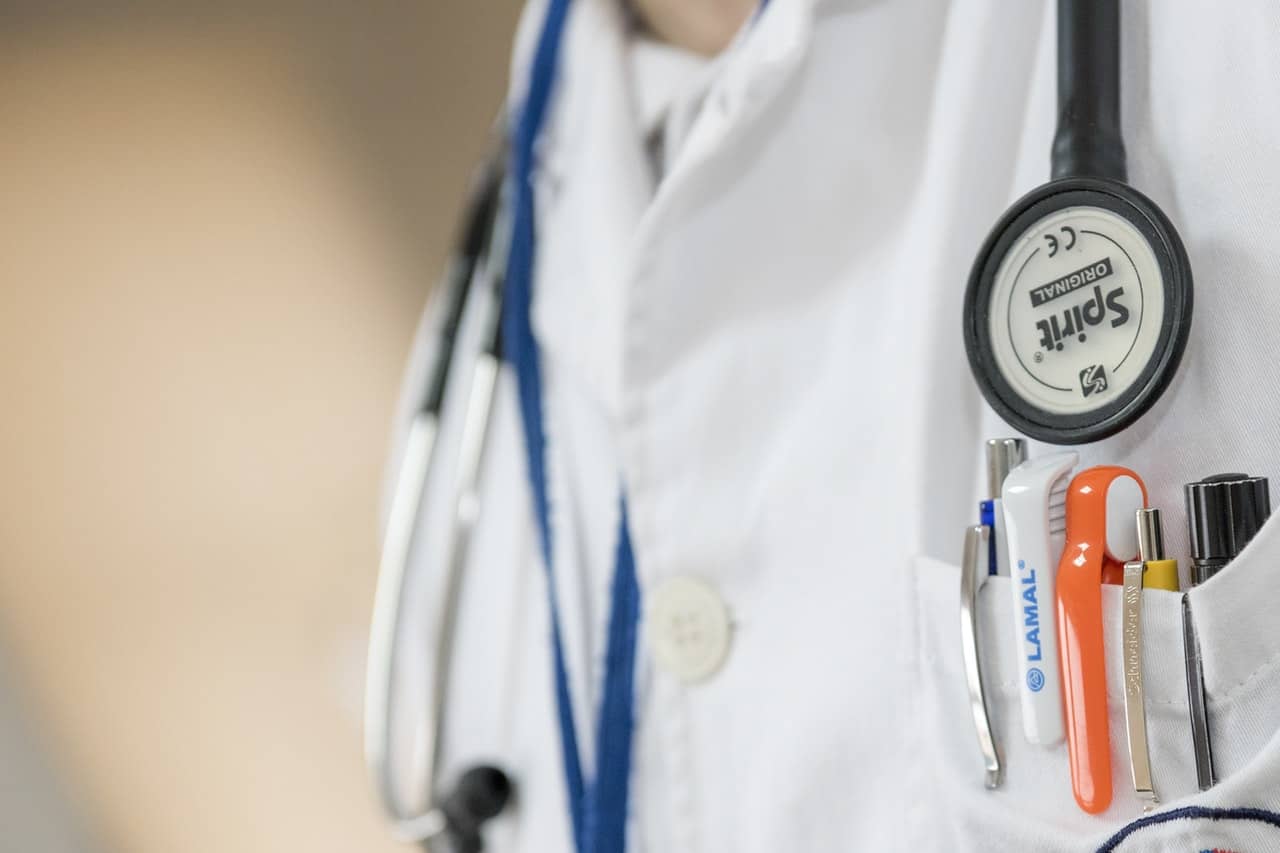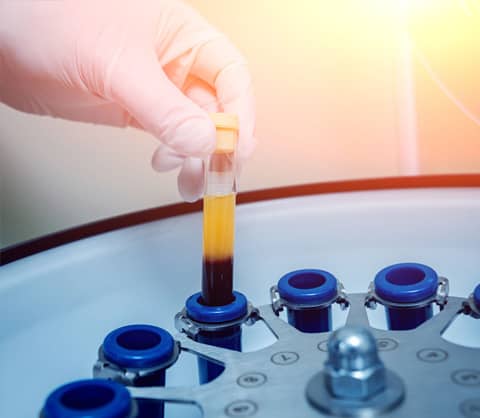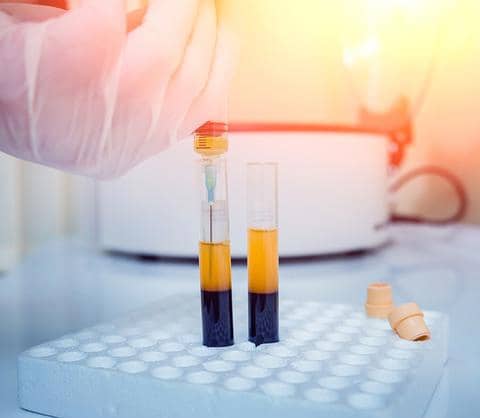
Advanced Cellular Biologics with Therapeutic Strength Compositions
PurePRP II is an autologous cellular biologic that has become standard of care for many treatment modalities. In today’s world of regenerative medicine, clinicians are requiring products that are not only clinically effective but, also have the versatility to provide for specific treatment requirements. This may include therapeutic strength PRP with low neutrophils and no red blood cells. Or it may include therapeutic strength PRP with high neutrophils and nominal red blood cells. Some physicians may require a bioregenerative fibrinogen matrix scaffold to support PRP retention and sustain growth factor release. Others may require protein compositions to help mitigate cellular degradation. Whatever the need, PurePRP® II has the biologic versatility to be an integral part of the treatment modality.
The Cellular Physiology of PurePRP® II
Deliverable Platelets in PurePRP® II
Deliverable platelets are the actual volume of viable platelets contained in a PRP sample. PurePRP® II provide upwards of 9.5 billion platelets in a 7mL treatment sample (approximately 1.4 million platelets per microliter). High volumes of deliverable platelets enhances the volumetric activity of platelet growth factors and cytokines in active tissue repair. Platelet alpha granules contain various platelet growth factors that promote tissue repair through cell proliferation, chemotaxis, differentiation, and angiogenesis. Platelet cytokines provide the chemical stimulus needed to mediate cell signaling and migration. The amount of deliverable platelets are clinically significant if you are to attain active tissue repair. It is imperative that your deliverable platelet count be more than 1 million platelets per microliter.
Neutrophils in PurePRP® II
Neutrophils are the most abundant leukocyte and one of the first-responders to migrate towards a site of injury or infection (chemotaxis). Neutrophils are also the hallmark of acute inflammation. This is an aggressive response of chemical signals from cytokines such as interleukins (IL-1, IL-8) and tumor necrosis factor alpha (TNF-α) along with many others. The primary function of the neutrophil is to engulf and destroy foreign material through phagocytosis. Under normal circumstances, neutrophils are short lived (1-2 days) and are cleared by tissue macrophages. In conditions where the neutrophils cannot be cleared, for a lack of macrophages, they undergo a process called necrosis resulting in the release of all of the intracellular contents. This causes the amplification and prolonging of the inflammatory response. This prolonged amplified inflammatory response potential, is a concern of many physicians. This is why physicians are not encouraged by a PRP product containing high concentrations of neutrophils.
Monocytes in PurePRP® II
Monocytes are the largest of all leukocytes and are characteristically non-inflammatory phagocytic cells. Monocytes migrate to sites of injury and infection and differentiate into macrophages and dendritic cells to elicit an immune response which last for longer periods of time (months rather than days when compared to neutrophils). Monocytes illicit the immune response through phagocytosis, antigen presentation, and cytokine production each of which has a specific and deliberate function in enhancing the immune response through both protective prophylaxis and active phagocytosis.
PurePRP® II is unique in that it greatly enhances monocyte concentrations, while giving the end user control over the amount of neutrophils they would like to add to their PRP preparation. PurePRP® II takes advantage of the long term phagocytic and protective properties of the monocytes while avoiding the potential harmful inflammation incurred by large concentrations of neutrophils that go through cellular necrosis. This is another differentiating factor that help to explain the natural success of PurePRP® II in patient outcomes.
PurePRP® II
One System Two Protocols
Protocol A
Protocol A processes PurePRP® without red blood cells or neutrophil granulocytes. This protocol is used when powerful healing without inflammatory activity is required at the application site. This protocol is also the low viscosity solution to a viable PRP product, providing very high concentrations of platelets in a bath of non-viscous plasma. This protocol has also been reported to reduce the potential for pain at the application site. It is the most frequently used protocol.
Protocol B
Protocol B processes PurePRP® with low red blood cell counts and very high cytokine activity and neutrophil cell recoveries. This protocol is used when the phagocytic powers of neutrophils are needed to help fight infectious processes at the application site. This protocol produces the highest chemoattractant activity and significantly increases regeneration potential. Once the neutrophils have completed phagocytosis, they become apoptic cells and are subsequently removed, thereby also eliminating the inflammatory activity.
The AbsolutePRP™
Concentrating System
The AbsolutePRP™ Concentrating System has been re branded from the former 544e. AbsolutePRP™ provides the complete PRP composition. Therapeutically high concentrations of platelets and growth factors along with very high concentrations of neutrophils, monocytes and other cell mediating cytokines. AbsolutePRP™ is the fastest and most efficient single spin 60mL concentrating systems available. Prepare 7mL of PRP, with high concentrations of regenerative cells, in a SINGLE 5 MINUTE SPIN. These systems were designed to accommodate physicians that run a busy practice and mandate superior performance outcomes that is consistent and reliable.
The AbsoluteBMC™
Concentrating System
The AbsoluteBMC™ Concentrating System has been re branded from the former 544e. AbsoluteBMC™ provides significant concentrations of CFU-F, CD34+, and total nucleated cell counts. CD34+ are cell markers for hematopoietic stem cells. These are the primary multipotent cells that replenishes all blood cell types. These cells are crucial for the regenerative processes needed for active tissue repair. In addition to these cells are CFU-F, which are representative of mesenchymal stem cells. Mesenchymal stem cells (MSC) are multipotent stromal cells that can differentiate into a variety of cell types, including cartilage, bone and adipose cells. AbsoluteBMC™ provides therapeutic concentrations of these cell types which is the key to desirable patient outcomes. AbsoluteBMC™ is the fastest and most efficient single spin 60mL concentrating systems available. Prepare 7mL of BMC, in a SINGLE 5 MINUTE SPIN.
QuickDRAW Delivery System with Malleable or Dual Spray
The QuickDRAW Delivery System is a state of the art delivery system that contain proprietary valve ports that permit simultaneous filling and delivery of the PRP plus activator. The system comes with a malleable spray tip or a dual spray tip. The dual spray tip permits activation at the delivery site and not in the device. This allows the delivery system to be used leisurely without clotting at the tip.
BioSynthetic Bone
FDA cleared sterile resorbable granule bone graft composed of purified fibrillar type I collagen, 60% hydroxyapatite and 40% tricalcium phosphate . The device is safe and has excellent biocompatibility. After implantation, the graft resorbs and is later replaced by natural bone. Comes in 5cc strip or 10cc strip
Tabletop Device Holder
The Tabletop Device Holder accommodates four 60mL concentrating devices. The Device Holder permits hands free operation and help to maintain stability while operating the concentrating device.
PurePRP® II Plasma
Concentrating System
The EmCyte Plasma Concentrator contains a 7mL concentrating chamber with microfiber filaments that quickly and accurately concentrates the plasma proteins. This system effectively concentrates ALL plasma proteins, including albumin, α2-macroglobulin, fibrinogen, regulatory proteins and clotting factors. Approximately 60mL of plasma can be concentrated down to 13mL in less than five minutes without centrifugation.
PureBMC® is Better Than Ever
PureBMC® is better than ever and remains the flawless solution to Bone Marrow Cell Concentrate. PureBMC® processes BMC in a system that remains closed and sterile throughout all steps of processing. This is especially important when processing in a surgical suite. It is also proven to concentrate viable platelets, hematopoietic stem cells (HSC), total nucleated cells (TNC) and mesenchymal stem cells (MSC) in a bath of plasma with a low hematocrit. PureBMC® can be prepared with or without Heparin, either way it provides viable platelet concentrates that further add to the strength of the cell composition. PureBMC® delivers the excellence and reliability physicians can depend on.
Higher HSC Concentrations
Hematopoietic stem cells (HSCs) are the blood cells that has the ability to replenish all blood cell types (Multipotency) and the ability to self-renew. This include monocytes, macrophages, erythrocytes, megakaryocytes, platelets, neutrophils, basophils, eosinophils, dendritic cells and lymphoid lineage cells.
Higher MSC Concentrations
Mesenchymal stem cells (MSC) are multipotent stromal cells that can differentiate into a variety of cell types. These cell types primarily include cartilage, bone and adipose cells. Mesenchymal stem cells are found in very small quantities in bone marrow aspirate, making the concentrating capabilities of PureBMC® more vital to the physician.
Higher TNC Concentrations
Total nucleated cell count by any method is a count of cells with nuclei. In order to properly represent the TNC cell count a correction calculation that removes nucleated red blood cells (nRBCs) is performed. It is understood, as in other therapies, that more cells better outcomes. GenesisCS
Pure BMC
PureBMC® has been designed to improve performance outcomes. The design details allows the end user to more accurately collect high therapeutic cell concentrates with low red blood cell content.
Same Great Outcomes Hematopoietic stem cells (CD34+), total nucleated cell (TNC), mesenchymal stem cell (CFU-F) and platelet isolation is perfected in the PureBMC® system. PureBMC® retains high concentrations of these cell types with the lowest concentrations of red blood cells in a bone marrow concentrate product. Using a specialized cell isolation technique, PureBMC® provide more than 9X cell concentration in 7mL of PureBMC® . Preparation times are less than 10 minutes at the point of care. With careful attention to the details of gradient cell isolation, PureBMC® is a viable choice for a low hematocrit and high yielding bone marrow cell concentrate product.
Selectable Volumes & Concentrations
PureBMC® provide selectable sample volumes ranging from 3mL to 14mL. No matter what the sample size, PureBMC® provide therapeutic cell counts that exceed industry standards.
Ongoing Performance Analysis Report Campaign
See the Ongoing Performance Analysis Report Campaign, for PureBMC® at https://www.emcyte.com for the “always current” and up-to-date analysis of the performance of the PureBMC® system. This system was developed to provide objectivity and transparency in the clinical performance of the EmCyte systems. To be a participant in sample submission, call 239-481-7725 or visit the website for more information.
The data provided in the Ongoing Performance Analysis Report Campaign is independently reviewed at a reputable laboratory.



